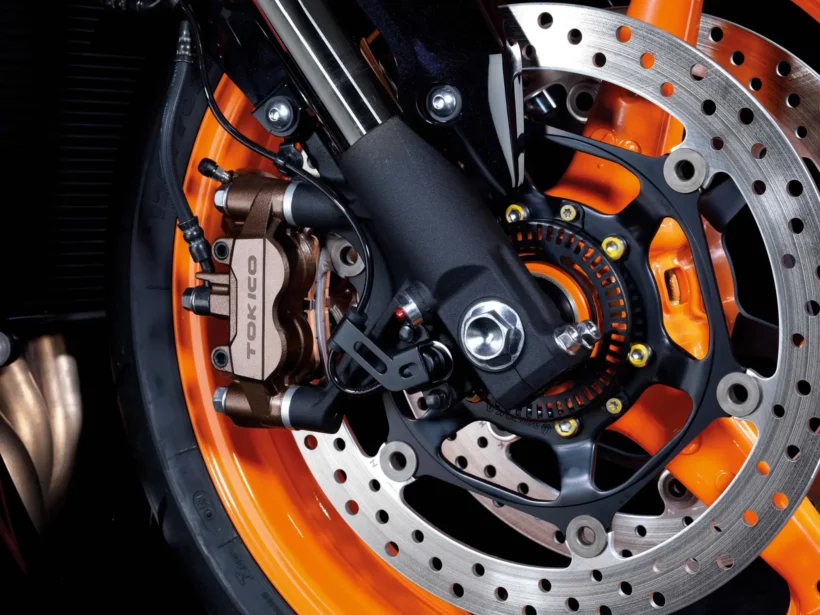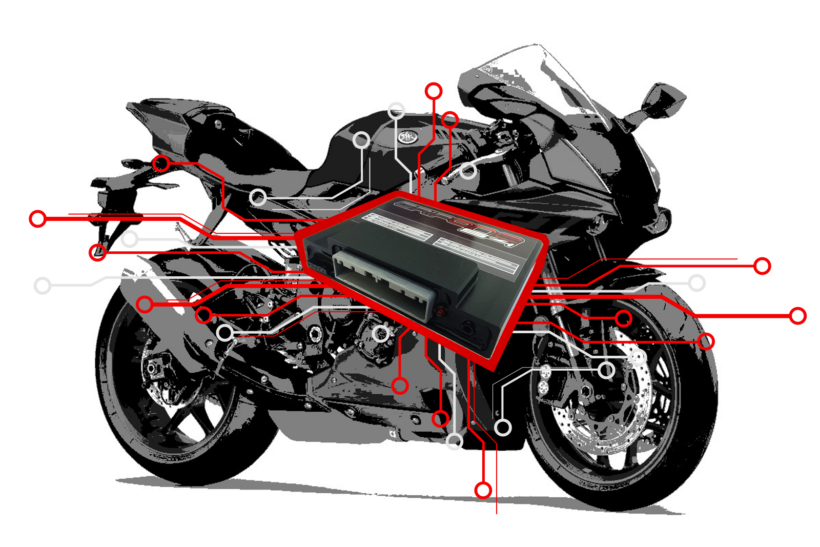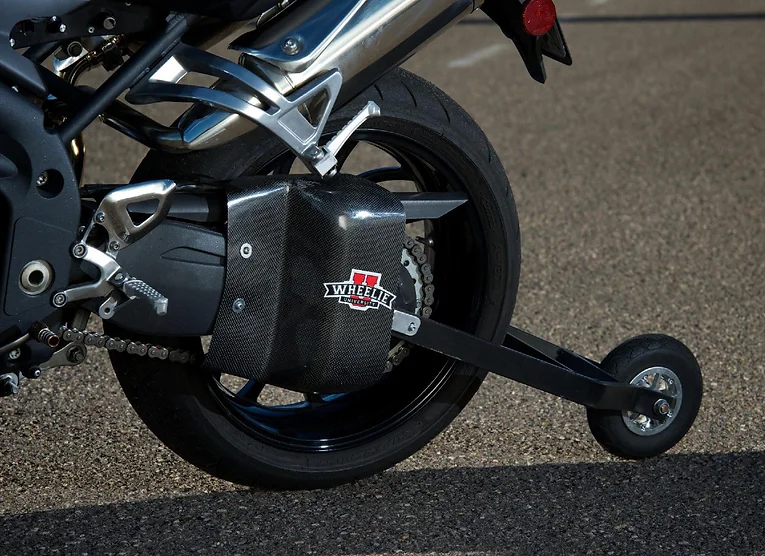Motorcycles have been a popular means of transportation in the United States for decades. Enthusiasts are drawn toward them for their speed and engagement, while efficiency buffs are enticed by a low starting price and smaller footprint than a traditional four wheeled vehicle. However, with a rising number of accidents and fatalities associated with them, the need for innovative safety technology has never been more apparent. Thankfully, safety technology has come a long way and the motorcycle industry has begun incorporating these features in newer bikes. Here’s how technologies old and new are helping riders stay safe.
Anti-Lock Braking Systems (ABS)

Anti-lock brakes are one of the most basic, yet crucial, safety technologies on motorcycles today. A motorcycle equipped with ABS will prevent the wheels from locking up during hard braking and sudden stops. Locking up the brakes can result in the rider skidding and losing control of the bike or even ejecting the rider over the handlebars if too much brake is applied. ABS allows the rider to apply maximum braking power without locking up the tires. This is achieved by modulating braking pressure and achieving the ideal balance between traction and braking force. Every rider can benefit from ABS as it allows the bike to perform perfect stops and maintain control of the motorcycle. ABS systems are now standard on many motorcycles or can be added to a bike for a modest fee.
Traction Control Systems (TCS)

Traction control systems are designed to prevent wheel slip when too much throttle is applied. Motorcycles equipped with TCS will cut power when the system detects a loss of traction to the rear wheel. Many people wrongly assume only high powered bikes would benefit from TCS since their high horsepower numbers can easily break traction. However, even lower powered bikes can lose traction during acceleration due to rain, road debris, or cold tires.
Inertial Measurement Unit (IMU)
While not a safety system itself, inertial measurement units are at the center of many different advanced safety technologies and enable their effectiveness. IMUs are sensors that detect changes in a motorcycle’s position and movement, providing real time data to the bike’s safety systems. This allows safety systems to make precise adjustments to speed, acceleration, and braking that would not be possible otherwise.
Cornering Anti-Lock Braking System
Traditional ABS systems prevent wheel lock-up during braking, but struggle in effectiveness when the rider is braking in a corner. Cornering ABS uses additional sensors such as IMUs (more on that later) to detect the lean angle of the motorcycle and apply braking force accordingly. This technology allows riders to confidently apply brakes while turning, running less risk for locking up the brakes and low-siding. Cornering ABS is common on sportbikes and supersports, making them a great layer of safety for riders who love taking on twisty roads.
Wheelie Control

Another safety technology popular among high powered bikes is wheelie control. Wheelie control systems use data from an IMU to detect when the front wheel is lifted off the ground and adjust power and braking to prevent the bike from lifting too high and looping out.
Adaptive Cruise Control
Just like its implementation on cars, adaptive cruise control is becoming increasingly common on new bikes. Sensors are used to detect the distance and speed of the vehicle ahead, the motorcycle then automatically adjusts speed to maintain a safe following distance. This technology is most useful in heavy traffic or during long trips, reducing fatigue and improving safety.
Blind Spot Monitoring

Also borrowed technology from cars and gaining popularity on motorcycles, blind spot monitoring warns the rider if there is a vehicle in an adjacent lane. When a vehicle is in the rider’s blindspot, an audible or visual warning is displayed.
Airbag Protective Gear
Airbag protective gear has emerged as one of the most game-changing safety advancements for motorcyclists in recent years. Gear equipped with airbags have potential to significantly reduce injuries in the event of an accident. Airbag protective gear includes jackets, vests, and suits that contain built in airbags that inflate in the event of a crash. Typically, a cord tethers the rider to the bike and when the rider is ejected, the tether activates the airbags inflation, cushioning the rider’s neck, shoulders, back, and chest.
Up until recently, this protective equipment was exclusive to the race track but has made its way to the consumer market. The technology is still relatively new and expensive, but has the potential to significantly reduce the severity of injuries to motorcyclists in an accident.
Impact of Safety Technology on Motorcyclists Safety

Many of these advanced safety features are fresh in the world of motorcycling, so not much data has been collected on its results. However, older studies conducted on ABS have shown that even minor leaps in safety have a huge impact. According to the IIHS from a study in 2013, motorcycles equipped with ABS were associated with a 31% reduction in the rate of fatal motorcycle crashes per 10,000 registered vehicle years. If a simple technological upgrade like ABS can have such a huge impact on motorcyclist fatalities, it’s safe to assume that more advanced technologies will play a significant role in keeping motorcycle riders safe.
Oftentimes, motorcycle accidents occur due to something out of riders’ control. According to the motorcycle accident lawyers at Miller & Hine, common causes include:
- Inattentive drivers
- Failure to yield at an intersection
- Hazardous road conditions
Though these advanced technologies can’t prevent an accident from these causes, a bike equipped with safety tech is much more adept to handle these situations and potentially prevent an accident from happening in the first place.
Challenges in Implementing Safety Technology
While safety technology has significantly improved motorcycle safety, there are still some roadblocks preventing a market wide adoption. One of the biggest inhibitors is cost. Many safety technologies require advanced instrumentation that can add a hefty price to the motorcycle’s overall price tag. Some riders may not see the value in investing in safety technology, instead opting for a cheaper barebones motorcycle. The most effective method to ensure widespread adoption would be by introducing legislation that mandates the implementation of advanced safety features. The NHTSA made ABS a requirement for four wheeled vehicles, so it’s not entirely out of the picture for motorcycles. However, there are no plans in the foreseeable future by the government to roll out these regulations.

